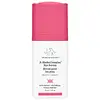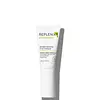What's inside
What's inside
 Key Ingredients
Key Ingredients

 Benefits
Benefits

 Concerns
Concerns

 Ingredients Side-by-side
Ingredients Side-by-side

Water
Skin ConditioningOctyldodecanol
EmollientGlycerin
HumectantBoron Nitride
AbsorbentCaffeine
Skin ConditioningSaccharomyces/Xylinum/Black Tea Ferment
Skin ConditioningCoconut Alkanes
EmollientCetyl Alcohol
EmollientCetearyl Olivate
Sorbitan Olivate
EmulsifyingNiacinamide
SmoothingMangifera Indica Seed Butter
Skin ConditioningHippophae Rhamnoides Oil
EmollientBis(Tripeptide-1) Copper Acetate
Skin ConditioningCaprylic/Capric Triglyceride
MaskingSclerocarya Birrea Seed Oil
HumectantDipeptide-2
Skin ConditioningPalmitoyl Tripeptide-1
Skin ConditioningPalmitoyl Tetrapeptide-7
Skin ConditioningCopper Lysinate/Prolinate
Skin ConditioningHesperidin Methyl Chalcone
AntioxidantGlycine Soja Oil
EmollientSodium Hyaluronate Crosspolymer
HumectantHydroxyethylcellulose
Emulsion StabilisingGlucose
HumectantBiotin
AntiseborrhoeicMethylglucoside Phosphate
Skin ConditioningRetinol
Skin ConditioningCeramide NP
Skin ConditioningTrideceth-6 Phosphate
EmulsifyingCoco-Caprylate/Caprate
EmollientLecithin
EmollientCetyl Palmitate
EmollientPanthenol
Skin ConditioningLeontopodium Alpinum Meristem Cell Culture
Skin ConditioningN-Hydroxysuccinimide
Skin ConditioningUbiquinone
AntioxidantCitric Acid
BufferingChondrus Crispus Extract
Skin ConditioningSteareth-20
CleansingThioctic Acid
AntioxidantTocopherol
AntioxidantChrysin
Skin ConditioningSclerotium Gum
Emulsion StabilisingSodium Citrate
BufferingPolysorbate 20
EmulsifyingXanthan Gum
EmulsifyingPotassium Sorbate
PreservativeLaureth-23
CleansingSodium Benzoate
MaskingChlorphenesin
AntimicrobialCaprylyl Glycol
EmollientSodium Hydroxide
BufferingSodium Carbonate
BufferingPhenoxyethanol
PreservativeSodium Chloride
MaskingChlorhexidine Digluconate
AntimicrobialPentylene Glycol
Skin ConditioningEthylhexylglycerin
Skin ConditioningWater, Octyldodecanol, Glycerin, Boron Nitride, Caffeine, Saccharomyces/Xylinum/Black Tea Ferment, Coconut Alkanes, Cetyl Alcohol, Cetearyl Olivate, Sorbitan Olivate, Niacinamide, Mangifera Indica Seed Butter, Hippophae Rhamnoides Oil, Bis(Tripeptide-1) Copper Acetate, Caprylic/Capric Triglyceride, Sclerocarya Birrea Seed Oil, Dipeptide-2, Palmitoyl Tripeptide-1, Palmitoyl Tetrapeptide-7, Copper Lysinate/Prolinate, Hesperidin Methyl Chalcone, Glycine Soja Oil, Sodium Hyaluronate Crosspolymer, Hydroxyethylcellulose, Glucose, Biotin, Methylglucoside Phosphate, Retinol, Ceramide NP, Trideceth-6 Phosphate, Coco-Caprylate/Caprate, Lecithin, Cetyl Palmitate, Panthenol, Leontopodium Alpinum Meristem Cell Culture, N-Hydroxysuccinimide, Ubiquinone, Citric Acid, Chondrus Crispus Extract, Steareth-20, Thioctic Acid, Tocopherol, Chrysin, Sclerotium Gum, Sodium Citrate, Polysorbate 20, Xanthan Gum, Potassium Sorbate, Laureth-23, Sodium Benzoate, Chlorphenesin, Caprylyl Glycol, Sodium Hydroxide, Sodium Carbonate, Phenoxyethanol, Sodium Chloride, Chlorhexidine Digluconate, Pentylene Glycol, Ethylhexylglycerin
Water
Skin ConditioningCyclomethicone
EmollientButylene Glycol
HumectantCaprylic/Capric Triglyceride
MaskingGlycerin
HumectantNiacinamide
SmoothingSodium PCA
HumectantSodium Hyaluronate
HumectantHydrolyzed Sodium Hyaluronate
Skin ConditioningCaffeine
Skin ConditioningGlyceryl Stearate
EmollientCeramide Ng
Skin ConditioningPhospholipids
Skin ConditioningCamellia Sinensis Polyphenols
AntioxidantAscorbic Acid
AntioxidantTocopheryl Acetate
AntioxidantRetinol
Skin ConditioningArnica Montana Extract
Skin ConditioningPhytonadione Epoxide
AstringentTetrahexyldecyl Ascorbate
AntioxidantPolyacrylamide
C13-14 Isoparaffin
EmollientPhyllanthus Emblica Fruit Extract
HumectantN-Hydroxysuccinimide
Skin ConditioningChrysin
Skin ConditioningSteareth-20
CleansingPalmitoyl Oligopeptide
CleansingPalmitoyl Tetrapeptide-7
Skin ConditioningHesperidin Methyl Chalcone
AntioxidantDipeptide-2
Skin ConditioningAlbizia Julibrissin Bark Extract
MaskingDarutoside
Skin ConditioningTribehenin
EmollientPolysorbate 20
EmulsifyingHydrogenated Polybutene
Butylated Pvp
PEG-10 Rapeseed Sterol
CleansingPalmitoyl Hexapeptide-12
Skin ConditioningPalmitoyl Pentapeptide-4
Skin ConditioningCarbomer
Emulsion StabilisingCetyl Alcohol
EmollientBehenyl Alcohol
EmollientLaureth-7
EmulsifyingPEG-100 Stearate
Caprylyl Glycol
EmollientPhenoxyethanol
PreservativeSorbic Acid
PreservativeTitanium Dioxide
Cosmetic ColorantWater, Cyclomethicone, Butylene Glycol, Caprylic/Capric Triglyceride, Glycerin, Niacinamide, Sodium PCA, Sodium Hyaluronate, Hydrolyzed Sodium Hyaluronate, Caffeine, Glyceryl Stearate, Ceramide Ng, Phospholipids, Camellia Sinensis Polyphenols, Ascorbic Acid, Tocopheryl Acetate, Retinol, Arnica Montana Extract, Phytonadione Epoxide, Tetrahexyldecyl Ascorbate, Polyacrylamide, C13-14 Isoparaffin, Phyllanthus Emblica Fruit Extract, N-Hydroxysuccinimide, Chrysin, Steareth-20, Palmitoyl Oligopeptide, Palmitoyl Tetrapeptide-7, Hesperidin Methyl Chalcone, Dipeptide-2, Albizia Julibrissin Bark Extract, Darutoside, Tribehenin, Polysorbate 20, Hydrogenated Polybutene, Butylated Pvp, PEG-10 Rapeseed Sterol, Palmitoyl Hexapeptide-12, Palmitoyl Pentapeptide-4, Carbomer, Cetyl Alcohol, Behenyl Alcohol, Laureth-7, PEG-100 Stearate, Caprylyl Glycol, Phenoxyethanol, Sorbic Acid, Titanium Dioxide
Ingredients Explained
These ingredients are found in both products.
Ingredients higher up in an ingredient list are typically present in a larger amount.
Caffeine is most associated with coffee, tea, and cacao. In skincare, it helps with calming inflammation and is rich in antioxidants.
While caffeine is used to treat cellulite and and dark circles, further studies are needed to prove this. It has been believed to help with these skin conditions due to its ability to dilate blood vessels and increase blood flow.
Some studies are looking into caffeine's ability to protect against UV rays.
Learn more about CaffeineThis ingredient is an emollient, solvent, and texture enhancer. It is considered a skin-softener by helping the skin prevent moisture loss.
It helps thicken a product's formula and makes it easier to spread by dissolving clumping compounds.
Caprylic Triglyceride is made by combining glycerin with coconut oil, forming a clear liquid.
While there is an assumption Caprylic Triglyceride can clog pores due to it being derived from coconut oil, there is no research supporting this.
Learn more about Caprylic/Capric TriglycerideCaprylyl Glycol is a humectant and emollient, meaning it attracts and preserves moisture.
It is a common ingredient in many products, especially those designed to hydrate skin. The primary benefits are retaining moisture, skin softening, and promoting a healthy skin barrier.
Though Caprylyl Glycol is an alcohol derived from fatty acids, it is not the kind that can dry out skin.
This ingredient is also used as a preservative to extend the life of products. It has slight antimicrobial properties.
Learn more about Caprylyl GlycolCetyl Alcohol is a fatty alcohol. Fatty Alcohols are most often used as an emollient or to thicken a product.
Its main roles are:
Though it has "alcohol" in the name, it is not related to denatured alcohol or ethyl alcohol.
The FDA allows products labeled "alcohol-free" to have fatty alcohols.
Learn more about Cetyl AlcoholWe don't have a description for Chrysin yet.
Dipeptide-2 is a peptide. It can help to reduce the effects of aging.
Glycerin is already naturally found in your skin. It helps moisturize and protect your skin.
A study from 2016 found glycerin to be more effective as a humectant than AHAs and hyaluronic acid.
As a humectant, it helps the skin stay hydrated by pulling moisture to your skin. The low molecular weight of glycerin allows it to pull moisture into the deeper layers of your skin.
Hydrated skin improves your skin barrier; Your skin barrier helps protect against irritants and bacteria.
Glycerin has also been found to have antimicrobial and antiviral properties. Due to these properties, glycerin is often used in wound and burn treatments.
In cosmetics, glycerin is usually derived from plants such as soybean or palm. However, it can also be sourced from animals, such as tallow or animal fat.
This ingredient is organic, colorless, odorless, and non-toxic.
Glycerin is the name for this ingredient in American English. British English uses Glycerol/Glycerine.
Learn more about GlycerinHesperidin Methyl Chalcone is an antioxidant and is a type of silicone.
We don't have a description for N-Hydroxysuccinimide yet.
Niacinamide is a multitasking form of vitamin B3 that strengthens the skin barrier, reduces pores and dark spots, regulates oil, and improves signs of aging.
And the best part? It's gentle and well-tolerated by most skin types, including sensitive and reactive skin.
You might have heard of "niacin flush", or the reddening of skin that causes itchiness. Niacinamide has not been found to cause this.
In very rare cases, some individuals may not be able to tolerate niacinamide at all or experience an allergic reaction to it.
If you are experiencing flaking, irritation, and dryness with this ingredient, be sure to double check all your products as this ingredient can be found in all categories of skincare.
When incorporating niacinamide into your routine, look out for concentration amounts. Typically, 5% niacinamide provides benefits such as fading dark spots. However, if you have sensitive skin, it is better to begin with a smaller concentration.
When you apply niacinamide to your skin, your body converts it into nicotinamide adenine dinucleotide (NAD). NAD is an essential coenzyme that is already found in your cells as "fuel" and powers countless biological processes.
In your skin, NAD helps repair cell damage, produce new healthy cells, support collagen production, strengthen the skin barrier, and fight environmental stressors (like UV and pollution).
Our natural NAD levels start to decline with age, leading to slower skin repair, visible aging, and a weaker skin barrier. By providing your skin niacinamide, you're recharging your skin's NAD levels. This leads to stronger, healthier, and younger looking skin.
Another name for vitamin B3 is nicotinamide. This vitamin is water-soluble and our bodies don't store it. We obtain Vitamin B3 from either food or skincare. Meat, fish, wheat, yeast, and leafy greens contain vitamin B3.
The type of niacinamide used in skincare is synthetically created.
Learn more about NiacinamidePalmitoyl Tetrapeptide-7 (formerly Palmitoyl Tetrapeptide-3) is a lab-made peptide with anti-inflammatory and skin-repairing benefits. It's made up of four amino acids (glycine, glutamine, proline, and arginine) and palmitic acid (which helps it penetrate skin more effectively).
This ingredient helps reduce inflammation by limiting the production of interleukin-6 (IL-6), a chemical that triggers inflammatory responses, particularly after UV exposure.
Less inflammation = slower collagen breakdown and a longer-lasting, youthful appearance.
Palmitoyl Tetrapeptide-7 also stimulates collagen production and supports a healthier skin barrier.
Over time, this can improve skin firmness, hydration, and reduce the appearance of fine lines. It’s commonly paired with Palmitoyl Tripeptide-1 in the well-known Matrixyl 3000 complex for enhanced anti-aging effects.
This ingredient has been shown to be effective and safe in cosmetic use and you'll typically find it in small amounts (less than 0.01%).
Due to its palmitic acid base, it may not be safe for Malassezia folliculitis.
Read more about other common types of peptides here:
Learn more about Palmitoyl Tetrapeptide-7Phenoxyethanol is a preservative that has germicide, antimicrobial, and aromatic properties. Studies show that phenoxyethanol can prevent microbial growth. By itself, it has a scent that is similar to that of a rose.
It's often used in formulations along with Caprylyl Glycol to preserve the shelf life of products.
Polysorbate 20 is made by combining ethoxylation of sorbitan, ethylene oxide, and lauric acid. It is a mild cleansing agent, surfactant, and emulsifier.
As a surfactant, it helps collect dirt and oils for washing. Emulsifiers prevent oils and water from separating.
Polysorbate 20 also adds scent to a product. Since it is made using sorbitol, it has a sweet scent. Sorbitol can also be found in fruits such as apples and peaches.
The lauric acid used to create Polysorbate 20 is often derived from coconuts.
Polysorbate 20 may not be fungal acne safe.
Learn more about Polysorbate 20Retinol is a gold-standard ingredient for anti-aging. It is a form of Vitamin A and belongs to the class of retinoids that also includes tretinoin.
Why is retinol famous?
It has the most scientific studies backing up its skin benefits out of all the non-prescription ingredients.
Retinol is proven to:
This is why retinol is effective at removing wrinkles, fading dark spots, treating acne, and reducing the appearance of pores.
Studies show retinol is less effective when exposed to UV. Be sure to look for appropriate packaging to keep your retinol potent (similar to Vitamin C).
Using retinol or any retinoids will increase sun-sensitivity in the first few months. Though studies show retinoids increase your skin's natural SPF with continuous use, it is best to always wear sunscreen and sun-protection.
We recommend speaking with a medical professional about using this ingredient during pregnancy.
Retinol may cause irritation in some people, so be sure to patch test. Experts recommend 'ramping up' retinol use: start using this ingredient once a week and work up to using it daily.
Read about Tretinoin
Learn more about RetinolSteareth-20 is a waxy compound used to emulsify ingredients. It is created from stearyl alcohol.
It possesses surfactant properties. This means it reduces surface tension and helps oils, dirt, and pollutants to be washed away.
The 20 stands for the number of ethylene oxide used to create this ingredient.
Learn more about Steareth-20Water. It's the most common cosmetic ingredient of all. You'll usually see it at the top of ingredient lists, meaning that it makes up the largest part of the product.
So why is it so popular? Water most often acts as a solvent - this means that it helps dissolve other ingredients into the formulation.
You'll also recognize water as that liquid we all need to stay alive. If you see this, drink a glass of water. Stay hydrated!
Learn more about Water